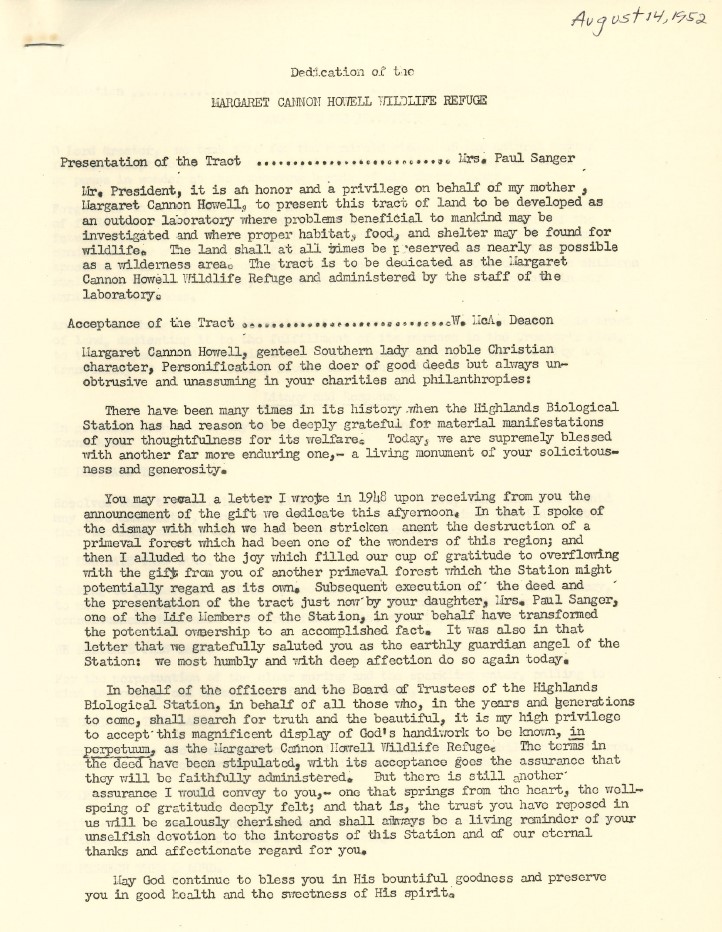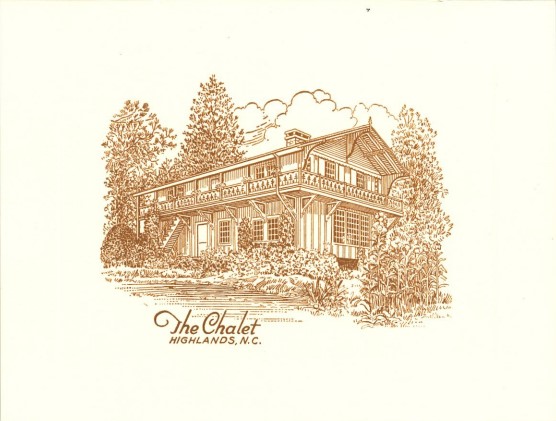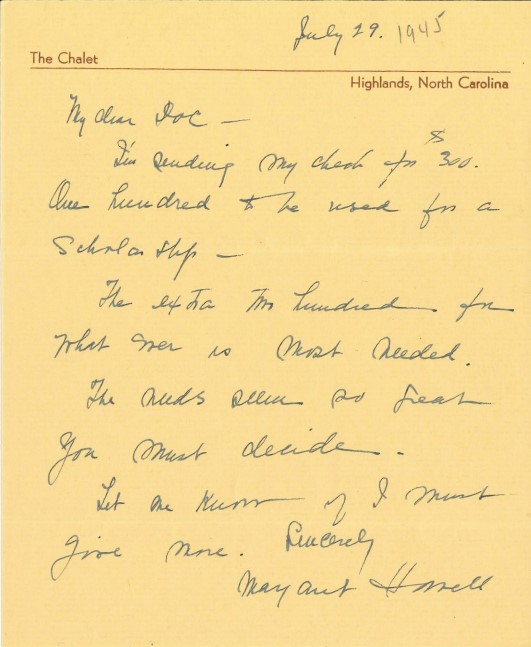Highlands Biological Station
The Legacy of Margaret Louise Cannon Carr Howell Clarkson (1880–1978)
“Her contributions were especially significant in the difficult years of the 1940s and early 1950s. Without her help, the Station might not have survived.”




A Lasting Imprint on Highlands Biological Station
Walk through the grounds of Highlands Biological Station, and you’ll find three historic cottages nestled among the trees: the Margaret Cannon Howell Cottage, the Warren McAllister Deacon Cottage, and the Henry M. Wright Cottage. Built in 1957, these cottages include shared bedrooms, bathrooms, a kitchen, and a communal living space. Their dedication in 1958 honored individuals whose lives and generosity helped shape the Station’s enduring legacy.
Meet Margaret Louise Cannon Carr Howell Clarkson
Margaret’s life story is as remarkable as her name is long. Born in 1880 to James William Cannon, founder of the legendary Cannon Mills in Kannapolis, NC, Margaret was the youngest of ten children and the last to survive into adulthood. She graduated from Agnes Scott College in 1898 and went on to live a life marked by resilience, philanthropy, and a deep commitment to education, science, and nature.
Over the course of her 98 years, Margaret married three influential men and raised a family whose connections to Highlands—and to the Station—continue to resonate.
A Family Rooted in Service and Science
The Carrs and Their Highlands Connection
Margaret’s first husband, Julian Shakespeare Carr Jr. (1878 – 1922), known as the “Hosiery King,” was a prominent banker and textile magnate. Together they had four children: Margaret Louise, Nancy, Julian III, and Mary Ann. All four maintained ties to Highlands, and several owned homes in the area.
Julian Carr III, a Harvard-trained lawyer, and his wife Anne Wallace Coppedge, a noted horticulturist and arts advocate, donated their Highlands home to the Station in 1967—a generous gift that further solidified the family’s legacy.
The Howells and the Chalet
In 1924, Margaret married her second husband, Clark Howell Sr. (1863 – 1936), publisher of The Atlanta Constitution and a major supporter of southern institutions. Their summer residence, still in Highlands Country Club today, affectionately named “The Chalet,” was designed by their nephew Linton Hopkins Young in 1932 and became a Highlands landmark. The Howell family’s ties to the Station ran deep, with family members including founders, architects, and patrons.
A Legacy of Giving
Margaret’s generosity to Highlands Biological Station began in the 1940s and continued for decades. From scholarships and laboratory equipment to land donations and board service, her support helped the Station endure challenging times and expand its mission.
Notable Contributions
- Scholarships and Research Funding: Margaret began by supporting student scholarships in 1941 and continued to give annually, helping young scientists pursue fieldwork and research.
- Infrastructure Support: Her donations funded dam construction, lab supplies, and even furnishings like filing cabinets and desks.
- Board Service: Elected to the Station’s Board in 1943, she later became an honorary member.
- Wildlife Sanctuary: In 1948, she donated 6.5 acres of virgin hemlock forest near Whiteside Mountain to establish the Margaret Cannon Howell Wildlife Refuge, preserved as a sanctuary for birds and wildlife.
A Legacy Cemented in Brick and Timber
In 1958, the Station honored Margaret by naming one of its newly constructed research cottages after her. The Margaret Cannon Howell Cottage, funded in part by a $60,000 National Science Foundation grant, was a symbol of the Station’s growth and her pivotal role in that transformation.
Her daughter, Mary Ann Sanger, delivered the dedication, and Dr. Lewis E. Anderson of Duke University gave a memorable address, praising the Howell family’s vision for land preservation and scientific inquiry.
Later Life and Final Chapter
In 1960, Margaret married Major Charles Dana Sayre Clarkson (1882 – 1967), an engineer and developer who had surveyed and helped develop land near Whiteside Mountain—including the tract that became the wildlife refuge bearing her name. Clarkson also played a role in the Station’s expansion plans during the 1950s.
Margaret passed away in 1978 at the age of 98. Her obituary in The Atlanta Constitution highlighted her many philanthropic endeavors, including her support for Highlands Biological Station and her founding role in the George C. Marshall Research Library.
Upon her death, Executive Director Thelma Howell wrote:
“Her contributions were especially significant in the difficult years of the 1940s and early 1950s. Without her help, the Station might not have survived.”
A Founder, A Philanthropist, A Force of Nature
Margaret Louise Cannon Carr Howell Clarkson remains one of the most influential figures in the history of Highlands Biological Station. Through her vision, generosity, and love for science and nature, she helped ensure the Station’s resilience, relevance, and reputation for decades to come.
-Bryding Adams, Volunteer Archivist, June 2025
